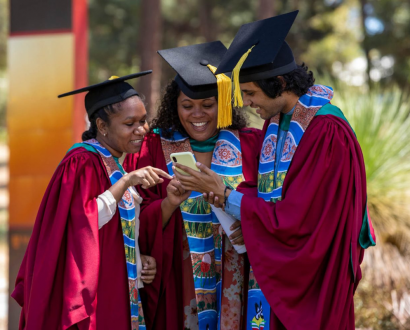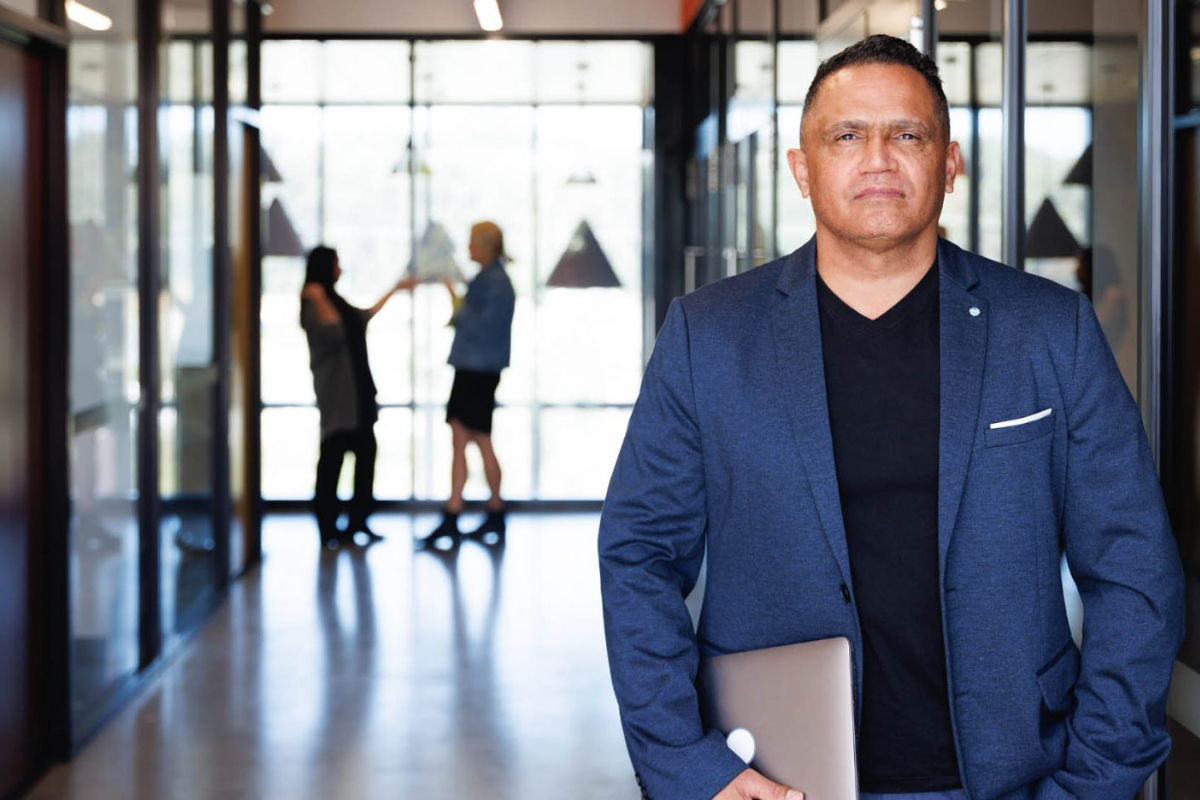Harnessing Indigenous innovation boosts opportunities for all

In our modern business culture, our minds are constantly occupied. Logistics, time, execution, data, reports and strategy are on the agenda, all of which are reflected and executed finely in a symphony of aspirational business deliverables.
But what if a different perspective could take this harmony to the next level? Traditional, or Indigenous businesses have long been doing it their own way and have plenty to teach us, if we only take the time to listen.
It’s something I have the privilege of doing on a daily basis in my work as Co-Director of Acknowledge This, a Perth-based consultancy firm that helps businesses to explore and connect with Aboriginal peoples and cultures with courage, excitement and joy rather than shame, guilt and fear.
With more than 476 million Indigenous people living in 90 countries across the world, building these positive connections is crucial. And with Indigenous businesses gathering momentum, playing an important role in reshaping modern economies and driving reconciliation, it has become a force that can no longer be ignored.
With Indigenous businesses gathering momentum, playing an important role in reshaping modern economies and driving reconciliation, it has become a force that can no longer be ignored.
Here in Australia, the number of Indigenous businesses increased by more than 47 percent between 2016 and 2021, with their collective contribution to the Australian economy rising at least 59 percent to sit in the range of A$8.5 billion (US$5.5 billion) to A$12 billion (US$7.8 billion).
In Canada, the Indigenous economy was valued at US$35.9 billion in 2020, around 2.2 percent of Canada’s gross domestic product. The Toronto-based Indigenomics Institute is confident it is on track to more than triple in size and is working to secure the Indigenous business sector’s place at the table.
"Through dialogue, economic policy, education and partnership development, we work to address how value creation is happening in the Indigenous economy and how corporate Canada can respond to growing Indigenous economic strength," Founder and CEO Carol Anne Hilton said at the opening of the Indigenomics on Bay Street Conference in November.
Over in New Zealand, the last 10 years has seen the Māori asset base grow at a significantly faster rate than the overall economy to a current valuation of more than US$42.5 billion. According to forecasts, it will reach US$60.8 billion by 2030.
"It is clear that there is much potential for the continued growth and success of Māori-led economic development in Aotearoa New Zealand," PwC’s Manukura Māori team stressed in a 2023 report. "By working together, with a focus on innovative solutions and sustainable outcomes, we can create a more prosperous and equitable future for all."
But there are a number of factors to consider in order to make this possible, as I have discovered over the years.

Putting relationships before business
Turn the clock back to 2015. I was working for an Aboriginal mentoring organization in Perth, Australia, which was helping to inspire Aboriginal students from the surrounding high schools to enter higher education after they finished.
It turned out to be an interesting dynamic, with the mentees teaching us a powerful lesson in traditional business. That was that their business was to be themselves.
This may seem counterintuitive to the concept of modern business, which is so focused on completing a series of tasks. But the reality is that there is much value to be found right here, as I myself discovered.
In modern business, we seem to forget the symbiotic nature of ‘who’ we are delivering to, and only focus on ‘what’ we are doing.
Instead of obsessing over ticking off a to-do list, we spent our time with our mentees giving them what they needed, which was having a good time and being themselves. Tackling the ‘work’ came after.
There is a lesson here that indeed my mentees brought to my mentors and myself. In the modern world, we would call this ‘two-way learning’, and that is that you as a person are important, and regardless of what skills you can bring to the workforce, there’s a potential relationship that must be established first and foremost.
In modern business, we seem to forget the symbiotic nature of ‘who’ we are delivering to, and only focus on ‘what’ we are doing. Traditional business, on the other hand, is always focused on relationships before the business.
Lessons in reconciliation
It’s an approach that can help those of us in the modern business world to deeply consider our relationships with ourselves, and those we work with and for. Furthermore, it’s an important lesson to remember as we work towards economic reconciliation and ‘closing the gap’.
When it comes to reconciliation, a common question I get in the workshops I deliver is, quite simply, "What is that?"
The modern business world’s answer is always very clear, and indeed accurate. It will be achieved when the gaps are closed between Indigenous and non-Indigenous communities; when graduation, mortality and incarceration rates are the same. This is a statistical, mental, modern answer, with an emphasis on individual achievement.
Indigenous businesses offer a similar, yet different answer. And it’s one I prefer. For them, the answer is when we don’t have to talk about it anymore, when we don’t need the Reconciliation Action Plans, or Reconciliation Week. This response looks at connection, collaboration and a social shift rather than a statistical or an outcomes-based approach to cultural change. This is a wholesome, heart-based, traditional answer, with emphasis on collective achievement.
These are all powerful business cases for economic reconciliation but it can only be achieved if companies can approach this in an authentic way.
Shifting the business narrative
For starters, investing in Indigenous businesses, entrepreneurs and innovators, has to be about more than just ticking a box or simply being seen to be doing the ‘right thing’.
With long histories intertwined with the land, Indigenous knowledge around caring for the country can generate huge benefits, a reality which is gathering recognition among researchers, policymakers and big corporates alike. But commercial exploitation of this knowledge is all too common, highlighting the need for Indigenous-led sharing of knowledge in the business sphere and rigorous protection of intellectual property.
With long histories intertwined with the land, Indigenous knowledge around caring for the country can generate huge benefits.
Higher education institutions are playing a key role in fulfilling this need. The Massachusetts Institute of Technology has a MIT Solve Indigenous Communities Fellowship, while Monash University in Melbourne, Australia, holds an Indigenous Innovation Challenge. Initiatives that have emerged from these programs include Indigenous-led land, sea and water remediation, native fruit offtake, improvement in manufacturing capabilities and a preservation of native plant biodiversity.
Monash’s Professor Christopher Lawrence heads up the university’s challenge with the aim of putting Indigenous innovation at the forefront of finding solutions to issues that affect First Nations communities. Connecting innovators with research expertise, funding and legal advice boosts their chances of mainstream success.
"It’s also about shifting the narrative of how we perceive Indigenous people and how Indigenous people are often used in business," he explains. "There might be a lot of box-ticking, where people are doing ‘welcome to countries’ or endorsements, but not actually really giving Indigenous people a real leadership involvement."
A seat at the table
With industries requiring access to Indigenous land in many instances, Indigenous people must be involved, not only in maintenance and administration roles, but also as scientists, engineers and mathematicians, Lawrence insists, pointing to the lessons learnt from Australia’s mining boom.
It’s a determination that gave rise to the National Indigenous Space Academy – a collaboration with the Australian Space Agency to create a pathway for Australian First Nations STEM students to intern at NASA’s Jet Propulsion Laboratory in the United States.
Last year, the program, also led by Lawrence, sent five Indigenous students to NASA’s Jet Propulsion Laboratory, with another five to make the trip this year.
"It is about building the Indigenous workforce to be able to be part of the space industry in this country," he says. "If we want this to be a successful business industry in Australia, then we need to make sure we’ve got a homegrown workforce, people who actually can be trained and apply all those different skills that we need for space research. And we need to include Indigenous people."
Once again, that collective approach holds many of the answers. Traditional business and modern business don’t have to be in opposition to each other, and modern business doesn’t have to ‘hold space’ for this ‘external construct’ of traditional business to fit within.
It’s the same outcome, just from two different perspectives.